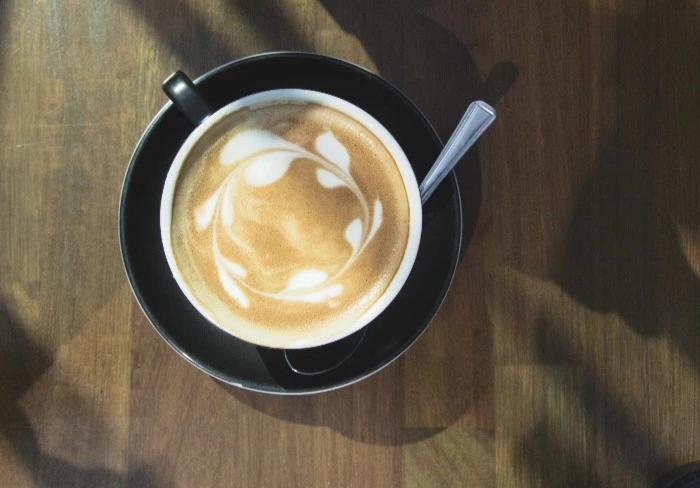Espresso is the foundation of many coffee drinks, but have you heard of white espresso? This lesser-known variation offers a unique twist on the traditional shot. In this article, we’ll explore what white espresso is, how it differs from regular espresso, and why it might become your new favorite.
The Basics of White Espresso
White espresso is not as widely recognized as other coffee terms, but it refers to a specific preparation method. Unlike a standard espresso shot, which is dark, bold, and intense, white espresso is lighter in both flavor and appearance.
The name comes from its creamy, pale crema—the golden foam that forms on top of a well-pulled espresso shot. In white espresso, this crema is more pronounced and lighter in color, giving the drink a softer look.
How is White Espresso Made?
White espresso is made using the same equipment as traditional espresso—an espresso machine that forces hot water through finely-ground coffee under high pressure. However, the key differences lie in the beans, roast level, and extraction process:
Lighter Roast Beans: While traditional espresso often uses dark or medium-dark roasts, white espresso typically employs lighter roasts. These beans retain more acidity and floral or fruity notes.
Extended Pre-Infusion: Some baristas use a longer pre-infusion phase, where water slowly saturates the coffee puck before full pressure is applied. This can lead to a smoother, less bitter extraction.
Adjusting the Grind Size: A slightly coarser grind may be used to reduce over-extraction, which can contribute to a milder taste.
The result is an espresso shot that is bright, nuanced, and less intense than its traditional counterpart.
White Espresso vs. Regular Espresso
At first glance, white espresso and regular espresso might seem similar, but they have distinct differences:
Flavor Profile
Regular Espresso: Bold, rich, with deep chocolatey or nutty notes. Often has a bitter edge.
White Espresso: Lighter, more delicate, with floral, citrus, or tea-like qualities.
Crema Texture & Color
Regular Espresso: Darker crema, sometimes with reddish-brown hues.
White Espresso: Thicker, paler crema, resembling whipped cream.
Caffeine Content
Contrary to what some believe, white espresso does not necessarily have less caffeine. Since caffeine content depends on the coffee bean and extraction time rather than roast level, a white espresso shot can have just as much (or even slightly more) caffeine than a standard shot.
The Origins of White Espresso
The exact origin of white espresso is unclear, but it likely emerged as specialty coffee evolved. With the third-wave coffee movement, baristas began experimenting with lighter roasts and alternative brewing techniques to highlight the natural flavors of high-quality beans.
Some credit Australian or Scandinavian coffee cultures for popularizing the concept, as these regions have long favored bright, acidic coffee profiles. Others suggest it developed as an offshoot of ristretto shots—shorter, sweeter espresso pulls.
How to Drink White Espresso
White espresso can be enjoyed in several ways:
As a Straight Shot
Due to its smoother taste, some drinkers prefer sipping white espresso neat, without sugar or milk. The lighter acidity makes it more approachable for those who find traditional espresso too harsh.
In Milk-Based Drinks
White espresso works well in flat whites, cortados, or cappuccinos. Its delicate flavors blend seamlessly with milk, creating a balanced, creamy drink without overpowering bitterness.
As a Base for Specialty Beverages
Some cafes use white espresso in signature drinks, pairing it with flavored syrups, spices, or alternative milks to enhance its natural sweetness.
Misconceptions About White Espresso
Because the term isn’t standardized, confusion exists around what white espresso really is. Here are some clarifications:
It’s Not Just a Ristretto
While both are milder than standard espresso, a ristretto is simply a shorter extraction (about 15-20ml), whereas white espresso refers to the roast and crema characteristics.
It’s Not the Same as a Blonde Espresso
Starbucks’ Blonde Espresso is a version of white espresso, using lightly roasted beans. However, not all white espresso is “blonde”—different roasters may use varying bean origins and profiles.
It’s Not a Flat White
A flat white is a milk-based drink, while white espresso is the coffee component itself.
Why Try White Espresso?
If you enjoy coffee but find traditional espresso too intense, white espresso offers a gentler alternative. Its bright, complex flavors make it ideal for those who appreciate nuanced coffee experiences.
Additionally, since it pairs well with milk, it’s a great choice for home baristas looking to elevate their lattes or macchiatos.
Brewing White Espresso at Home
Want to try making white espresso yourself? Here’s how:
Choose the Right Beans: Opt for single-origin light or medium roasts with tasting notes like citrus, berries, or honey.
Adjust Your Grinder: Use a slightly coarser setting than you would for dark roast espresso to avoid over-extraction.
Experiment with Extraction: Try a longer pre-infusion (5-10 seconds) before full pressure to enhance sweetness.
Monitor the Crema: A well-made white espresso should have a thick, pale golden crema.
The Future of White Espresso
As coffee trends continue to evolve, white espresso may gain more recognition. With increasing interest in light-roast specialty coffee, this approachable yet sophisticated espresso variation could become a staple in cafes worldwide.
Conclusion
White espresso is a fascinating twist on a classic, offering a smoother, more nuanced alternative to traditional espresso. Whether you’re a seasoned coffee enthusiast or just exploring different brewing methods, it’s worth giving this underrated style a try. Next time you order an espresso, ask if they serve a white version—you might discover a new favorite way to enjoy coffee.
Related topics:
Buon Giorno Coffee: A Journey to Exceptional Espresso & Beyond
How Long to Pull a Double Shot of Espresso
Where to Buy Gaggia Espresso Machines: A Complete Guide


